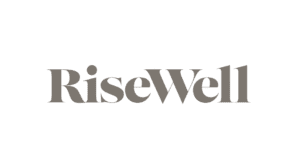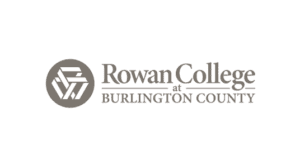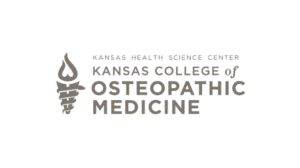Many higher education marketing professionals are looking for new tactics to improve enrollment in the digital-driven environment. Before implementing new marketing strategies, it is important to take a look at what you are doing now. Is there anything you could be doing differently? Is something hindering the results?
We listed the most common marketing mistakes that may prevent you from reaching your enrollment goals. Don’t get spooked by the don’ts, we also included do’s so you can create the best enrollment marketing strategy possible.
#1 Not Knowing Your Target Audience
Understanding who your target audience is, where they are, what content resonates with them, and how they prefer to receive communication from you is the key to increasing quality leads. If you don’t have your target audience in mind with everything you do, it is unlikely you will be able to reach, engage, or eventually convert them into enrolled students.
What to do: Create student personas
The first step is to research and collect as much data as you can about your ideal student. Interview existing students to understand what platforms they use, what motivates them, why they chose your institution, and so on. Leverage that data to create student personas that will help you target specific individuals. Write a detailed summary of each persona, including behavior patterns, demographics, expectations, motivations, and pain points.
#2 Tracking Activity, Not Results
Is your reporting focused on activity metrics such as social media followers, likes, shares, subscribers, and page views? While it makes us feel good when these numbers go up, they don’t provide real indication on how successful your campaigns are. It can be dangerous to make decisions based on activity metrics because they don’t translate into new inquiries, enrollments, or overall profit – all of which are common goals in higher education marketing.
What to do: Focus on meaningful metrics
Use analytics tools, such as Google Analytics, to track actionable metrics, align them with your goals, and measure them regularly to track the progress of your marketing efforts. In enrollment marketing, the most meaningful metrics include conversions, search ranking, click-through-rates, cost per lead, and ROI.
#3 Underestimating the Power of Social Media
Statistics show that 90% of users aged 18-29 use at least one social media platform, so it is fair to say a majority of your prospective students use either Instagram, Facebook, YouTube or TikTok. If your institution doesn’t have a strong social media presence, you are missing out on a huge opportunity to be where your target audience is.
What to do: Focus on authentic content
Avoid using stock photos, or high-produced branded content. Instead focus on posting good quality, authentic content, consistently. Gather user generated content (UGC) from your student ambassadors, faculty, and alumni to engage audiences and show behind-the-scenes clips on what the life on campus looks like to help prospective students imagine their future at your school. Creating a unique hashtag for your school is a great way to encourage users to produce and share content.
#4 Ignoring Lead Nurturing
As marketers, we love to see new form submissions come in, whether it is someone requesting more information or booking a (virtual) campus visit. But our work shouldn’t end there. Even if a prospect has shown interest in your college or university, it is likely going to take them a while to make a final decision.
What to do: Keep the conversation going
It is important to understand the stages of the student enrollment funnel, and all the touch points along the journey. Help the prospective student with their decision process by maximizing the number of touchpoints through effective remarketing and email marketing campaigns. Provide useful content at each stage to stay top of mind, and continue communication.
#5 Poor Mobile User Experience (UX)
There is no denying we live in a mobile-first world with little patience for pages that take over 5 seconds to load, or buttons that are impossible to click on a mobile screen. Mobile responsiveness plays a significant role, especially if a majority of your site visitors are Gen Z; a whopping two thirds of Gen Z internet users report smartphones as their preferred device to access the web.
What to do: Audit and monitor page performance
Ask your web development team to perform a site-wide audit to identify errors that may impact UX for mobile users. Some quick fixes can include improving site load speed by compressing images, making call-to-action buttons more prominent, and improving mobile navigation.
We recommend using Google’s PageSpeed Insights to find out where your site stacks up.
#6 Not Optimizing Your Website for SEO
You have put time and effort on your website design, its usability and content. But all your hard work will never be seen if prospects can’t find your website. Many may think it is enough to optimize your website once, and the SEO work is done. In reality, maintaining a high-ranking website requires ongoing work to keep up with algorithm changes and competition.
What to do: Focus on relevant keywords
Start with an in-depth keyword research to discover what keywords your prospects use to find you (and your competitors). Then implement those keywords on your website content including meta descriptions, program descriptions, press releases, and blog articles. Pay attention to relevant meta descriptions and titles; they are the first thing a prospective student sees on the search engine results page and can convince them to click your link.
#7 Not Knowing Your Competitors
No matter how hard you and your marketing team are working, your competitors may be doing things better. Who are you losing students to? Why are they outperforming you? What strategies do they use? These are some of the questions every higher education marketing professional should address regularly to better understand the competitive landscape.
What to do: Competitive analysis
Performing a competitive analysis of your top competitors helps you identify similarities and differences between you and your competition, and what you can do to make your school stand out. Use the information to take a critical look at your positioning and to implement changes to your enrollment marketing strategy. Need help with the analysis? Get a free marketing analysis, put together by Mason Interactive’s digital experts.
Hopefully, this list will help you to steer away from the common enrollment marketing mistakes. Book a consultation with our higher education marketing experts to talk more about your enrollment strategy.






















